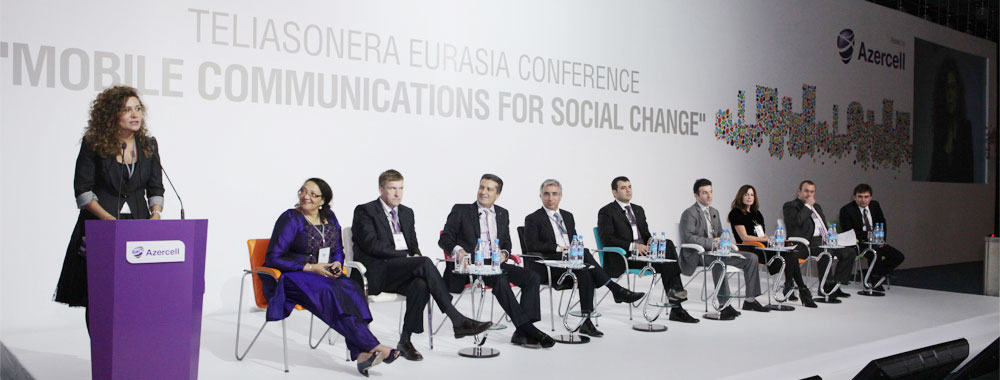
Mobile Communication Impact on Education - New Opportunities and Challenges
TeliaSonera Eurasia International Conference on
Mobile Communications for Social Change
November 25, Baku, Gulustan PalaceSome Mobile Communication Statistics.
- According to the reports the number of mobile phones in use in the world exceed 5 billion (world pop is 6,8 bln)
- The share of smartphones as a proportion of overall device sales has increased to 29% for phone purchasers in the last six months;
- Students spend about half of their time outside of the University;
- Today more mobile phones have Internet access than PCs;
- There are more than 400 mln facebook users and 100 million of them use smartphones;
- There are 7 000 000 mobile phones in Azerbaijan;
- About 98% of populated areas in Azerbaijan are covered by mobile network.
Qafqaz University’s vision to mobile communication
 The Net Generation or so-called digital natives are today’s college and university students seem completely at home in the digital world. They adopt technologies rapidly. When they want information, they just use the Internet to find for themselves. Students are not only consumers of information but also active information creators – including text, images, audio, and video.
The Net Generation or so-called digital natives are today’s college and university students seem completely at home in the digital world. They adopt technologies rapidly. When they want information, they just use the Internet to find for themselves. Students are not only consumers of information but also active information creators – including text, images, audio, and video.
Mobile phones are almost ubiquitous with 97% of university students and about 50% of them use smartphones expecting new services and applications. For them the small screen of the mobile phone is ‘a window to an infinite space’ through which they perform following learning processes: searching information, listening, reading, questioning, estimating, practicing, etc. Ubiquitous m-learning allows students to access learning anywhere, anytime using mobile devices. For example, students can listen to audio learning resources on an iPod or an mobile phone while jogging or traveling to university.
The implications of all this free-flowing, easily accessible information are nothing short of revolutionary. In an age of abundant, networked information, faculty, librarians, and IT staff face new challenges helping students define the information needed, collect that information, organize and synthesize it, and determine its quality:
Qafqaz University’s vision to mobile communication lies on five research directions (are all significant issues in m-learning) and all need to be better investigated:
- Extending the ongoing e-learning project to m-learning;
- Fostering interactivity on-campus using mobile devices – developing mobile version of existing SIS;
- Ubiquitous learning infrastructure – establishing comprehensive wireless network to support mobility;
- M-learning for some disciplines at first stage – creating appropriate content,
- Strategies including technical solutions for low-cost connectivity and m-learning use.
Development of new pedagogical practices to migrate elearning to m-learning, taking into account the limitations of mobile devices in terms of screen size, limited storage capabilities and limited memory, but at the same time drawing on the current best practice examples in elearning strategies it's what we should to do to support mobile learning.


